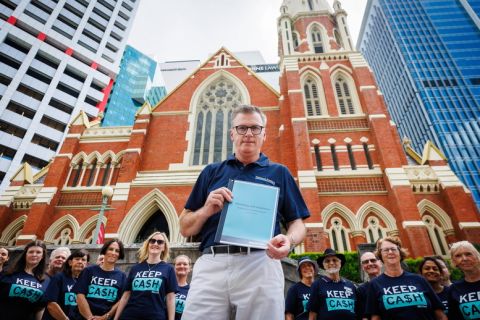Tech breakthrough in stroke detection
An app that helps identify symptoms has researchers confident more lives can be saved.

Time is of the essence in treating a stroke. The earlier you are treated can reduce the longterm severity of the stroke and limit damage to the brain.
But often the person having the stroke and first responders, such as paramedics and hospital emergency staff, have trouble reading the symptoms.
The face is a key window into external stroke symptoms.
A facial droop, where one side of the mouth is not activated when a person tries to smile, is one such sign. However, other indicative facial expressions can be very subtle.
Also, facial expressions differ between people and can be more difficult to detect depending on the person’s ethnicity or cultural background.
Developers of a new smartphone face-screening tool say it could help paramedics identify stroke in seconds – much sooner and more accurately than is possible with current technologies.
A team of biomedical engineers at The Royal Melbourne Institute of Technology (RMIT) University developed the AI capabilities behind the technology with the aim of enhancing patient recovery.
“Early detection of stroke is critical, as prompt treatment can significantly enhance recovery outcomes, reduce the risk of long-term disability, and save lives,” said research team leader Professor Dinesh Kumar from RMIT’s School of Engineering.
“We have developed a simple smartphone tool that paramedics can use to instantly determine whether a patient is post-stroke and then inform the hospital before the ambulance leaves the patient’s house.”
The smartphone tool, which has an accuracy rating of 82% for detecting a stroke, would not replace comprehensive clinical diagnostic tests, but could help identify people needing treatment much sooner.
Studies indicate that nearly 13% of strokes are missed in emergency departments and at community hospitals, while 65% of patients without a documented neurological examination experience an undiagnosed stroke.
The app user points the smartphone at the patient and presses a button. The video taken is analysed in real time and does not have to be stored.
The app is at a pilot stage but its developers foresee the day when first responders such as paramedics or nurses in the emergency department would have this app on their smartphones.
When they first see a patient who has experienced a medical emergency, they can use the app to detect if the patient may have suffered a stroke in seconds. That way, treatment can be fast-tracked accordingly.
The team plans to develop the smartphone tool in collaboration with healthcare providers.
“We want to be as sensitive and specific as possible. We are now working towards an AI tool with additional data and where we are going to be considering other diseases as well,” Professor Kumar said.
“Collaboration with healthcare providers will be crucial to integrate this app into existing emergency response protocols, providing paramedics with an effective means of early stroke detection.”
Strokes are among the leading causes of death and permanent disability. Some 5% of deaths are due to stroke, while strokes cost the Australian health-care system A$6.2 billion annually.
Strokes occur when there’s a sudden loss of blood flow in the brain. This prevents the brain tissue from getting the oxygen and nutrients it needs, which can lead to damage to sections of the brain.
Symptoms to look out for include:
Has their face or mouth drooped?
Can they lift both arms?
Is their speech slurred? Do they understand you?
If you see any of these signs, call 000 immediately and ask for an ambulance. Early treatment could save their life.
- Weakness or paralysis elsewhere in the body, on one or both sides.
Loss of sensation, usually on one side.
Loss of vision or blurred vision in one or both eyes.
- A sudden and severe headache.
Dizziness, loss of balance or an unexplained fall.
Difficulty swallowing.
Drowsiness or loss of consciousness.
A stroke is always a medical emergency. The longer it takes to get treatment, the more likely there will be stroke-related brain damage afterwards.
Related reading: Health Direct, MIT





